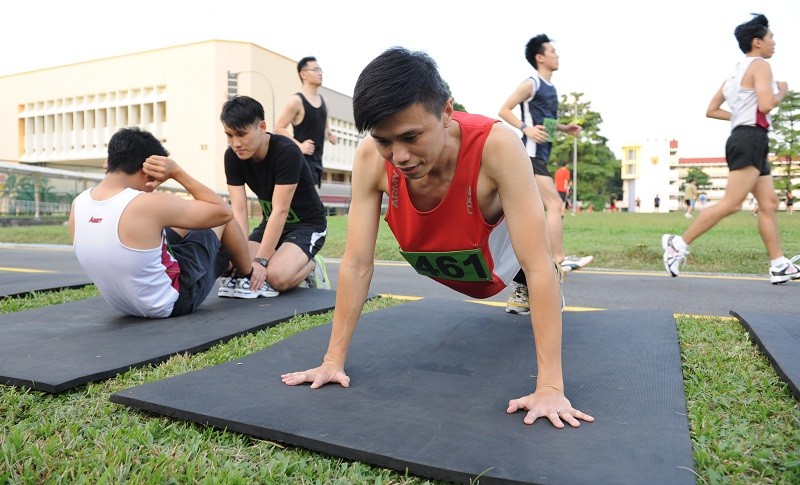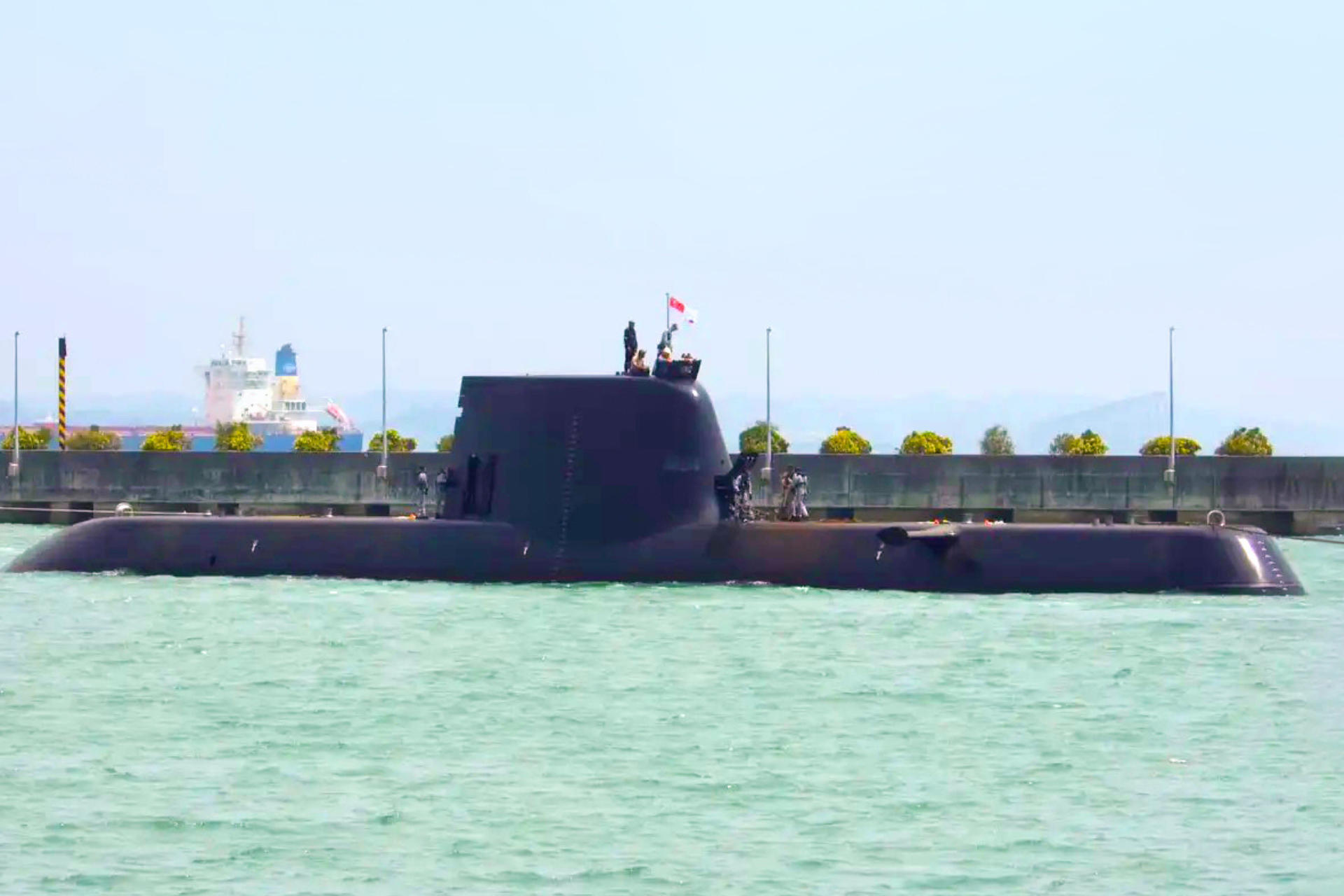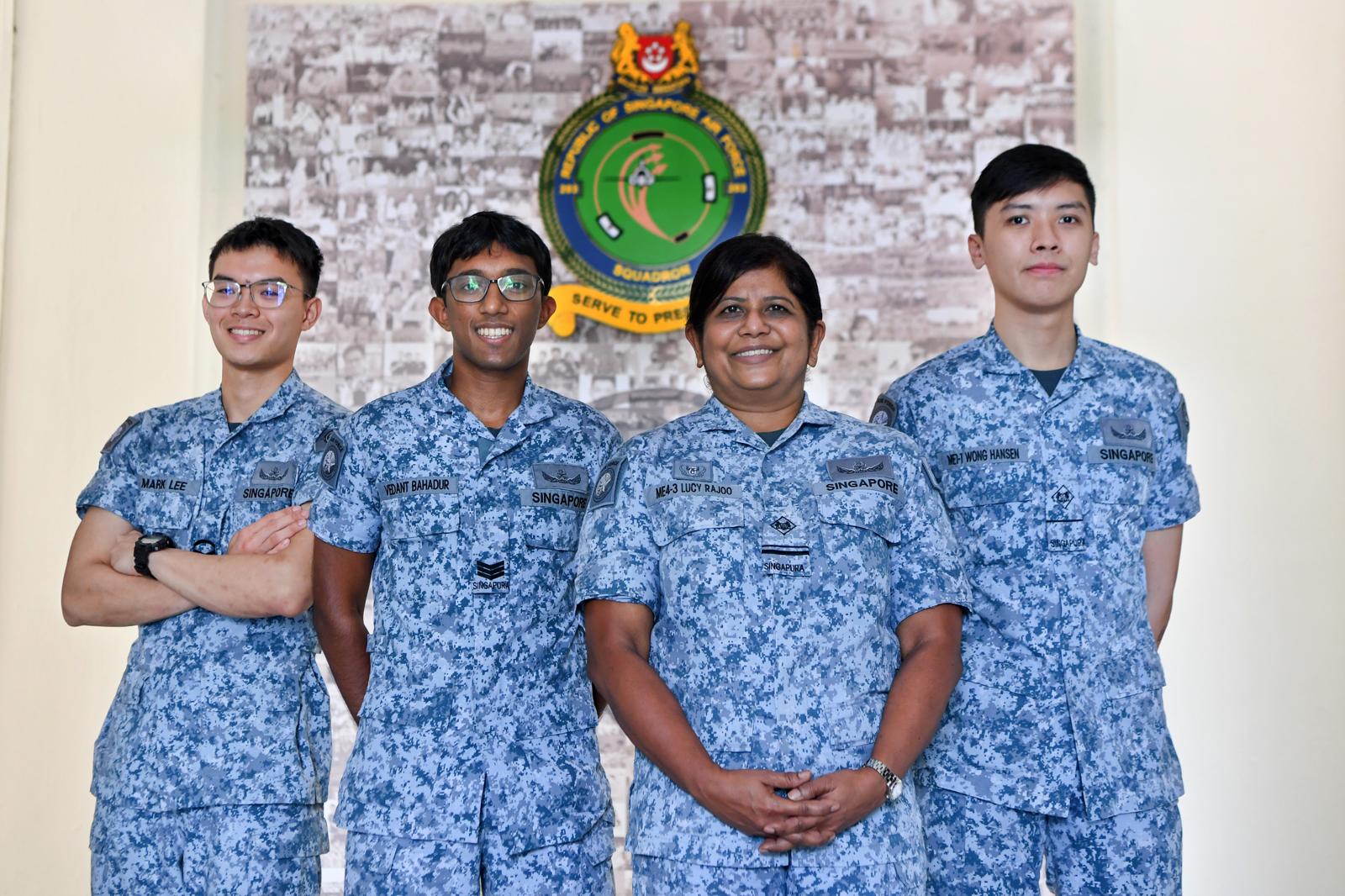NEW THREE-STATION FITNESS TEST FOR SAF IN APRIL 2015
// STORY Ong Hong Tat
// PHOTO Chua Soon Lye
| Notice |
|---|
| The IPPT standards discussed in this article - while correct at publication - have been superseded as of 27 February 2015. The most updated information on IPPT format and passing standards can be found here. |
Singaporean males who have National Service (NS) obligations can start hitting the floor, as push-ups will be included in the Individual Physical Proficiency Test (IPPT) from next year.
The Singapore Armed Forces (SAF) has announced that the IPPT will be simplified to a three-station test format (instead of the current five-station one).
Speaking to local media on the changes to IPPT on 23 Jul, Chief of Army Major-General (MG) Perry Lim said: "Physical fitness is a personal responsibility and we want our NSmen to take ownership of their physical fitness.
"We will introduce a simpler IPPT format with fewer stations so that our servicemen can train for IPPT on their own without the need for specialised equipment. Our NSmen can even adopt the new IPPT format for their routine exercise."
Push-ups aside, the other two stations will be familiar to Singaporean males. Sit-ups and the 2.4km will remain in the new IPPT format. It tests soldiers on upper body strength (push-ups), abdominal strength (sit-ups) and lower body strength, endurance and cardiovascular fitness (2.4km run).
Holistic fitness programme
The new IPPT format fits in well with the SAF's holistic fitness programme. Explaining the move, MG Lim said: "Over the past few years, we have implemented a revised combat fitness training and test regime for our soldiers."
The SAF builds up the combat fitness of its soldiers through the Standard Obstacle Course, Vocation Obstacle Course (VOC) and Vocation-Related Exercises (VREs). The VOC and VREs were implemented in September 2010.
Regular route marches and field exercises also help develop the SAF soldier's combat fitness. "Having implemented an effective combat fitness regime, we think it is timely for us to review our IPPT, which is a test of physical fitness," said MG Lim.
Selected SAF units - active and NS units - will take part in a pilot implementation programme from September to November this year to determine how best to administer the new format. At least 3,000 servicemen and women of different vocations and age-groups will be involved in this pilot phase.
Following the three-month pilot, the new IPPT format will be used across the entire SAF for both active servicemen and NSmen from 1 April 2015.
The transition will be gradual, said MG Lim. "We are prepared to give NSmen an option to do the existing five-station format or the new format for one to two years after April next year."
The changes focus squarely on fitness and less on the method used to measure fitness, said MG Lim. He said: "The fitness of our soldiers is essential to the operational readiness of the SAF. Our active service personnel and NSmen need to be fit to perform the tasks that we give them as soldiers.
"Our servicemen will still need to train to pass IPPT. To achieve Gold and Silver will be just as challenging as before."
Easier to train for IPPT
For Operationally Ready National Servicemen like Captain (NS) Lim Seow Lye, the simplified IPPT format makes it easier for him to train for the annual test. "I can easily train for the two static stations at home," he said.
The old five-station IPPT requires equipment to train for, such as pull-up bars and space for exercises such as the Standing Broad Jump.
Like many NSmen, the 34-year-old juggles work, family and NS commitments. CPT (NS) Lim is a manager at Certis Cisco and serves in an NS Guards unit.
Being able to train for his IPPT even at home is a benefit for him. "That way, my wife won't nag that I leave her alone to manage the kid and housework!" he laughed.
Said Senior Lieutenant Colonel (SLTC) (NS) Bervyn Lee, commander of an NS brigade: "The numbers tell it; if I had to train for three stations instead of five, it would be easier to train for." SLTC (NS) Lee holds a PhD in Sports and Exercise Psychology, and is a member of the SAF fitness advisory board.
He added: "To do well in the three stations still requires effort. (And) we shouldn't allow three or five stations to define our fitness… We shouldn't need the SAF or anyone to tell us that we should only be fit for these items. My fitness is mine and mine alone to take care of."
Simpler scoring system
The scoring system will also change to a simpler format. Soldiers will earn points for their performance in each of the three stations. The entire IPPT will be scored upon a maximum of 100 points.
"This way, soldiers can make up through more sit-ups, if they are weak in push-ups and running, or vice versa. There's a limit to how much you can make up, but I like this counting system because it encourages NSmen to max out on each station and it plays to the individual's strengths." said Minister for Defence Dr Ng Eng Hen in a Facebook post on 23 Jul.
Though the scoring system has been simplified, soldiers will still need to train for IPPT. Said CPT (NS) Lim: "Although there is a reduction in the number of stations, it's not easier to pass. Every station has a certain level of difficulty; if you don't train regularly it will be hard to pass."
The 2.4km run carries the heaviest weightage. Soldiers can potentially score up to 50 points. Push-ups and sit-ups carry a maximum of 25 points each.
For NSmen the magic number is 51. That's the number of points they need to pass the new IPPT format. For Full-time National Servicemen and Regulars, the bar is set higher at 61 points. They are held to a higher passing standard because fitness training is incorporated into their work and training routine.
Different standards for different ages
Age-categories have also been re-looked and shortened. Instead of five-year bands, Servicemen will now be held to different physical fitness standards every three years. The new age category system is more sensitive to the effects of age on physical fitness, said MG Lim.
For example, an NSman within the 34 to 36 age group will need to perform 35 push-ups in a minute for 20 points, 35 sit-ups in a minute for 20 points and run 2.4km in 10mins 40secs for 41 points. This gives him a total of 81 points which qualifies him for the IPPT Gold award.
For elite units in the SAF such as the Commandos, naval divers and Guardsmen, the bar for IPPT Gold is a minimum of 85 points.










